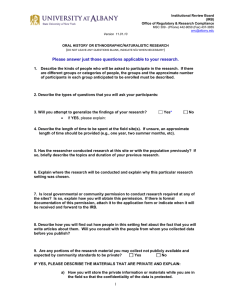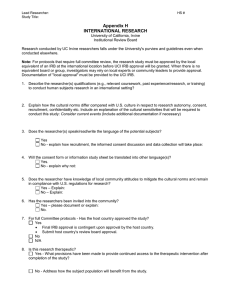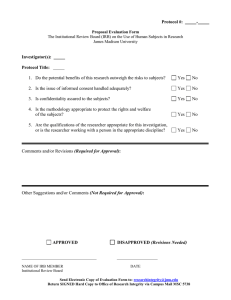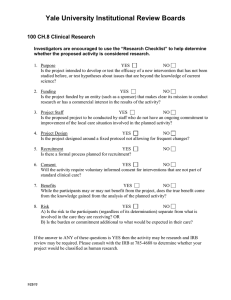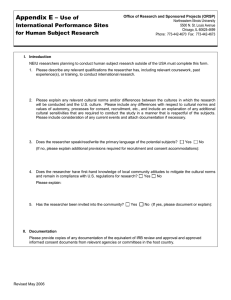Please, keep in mind that these are simply examples. They are not
advertisement
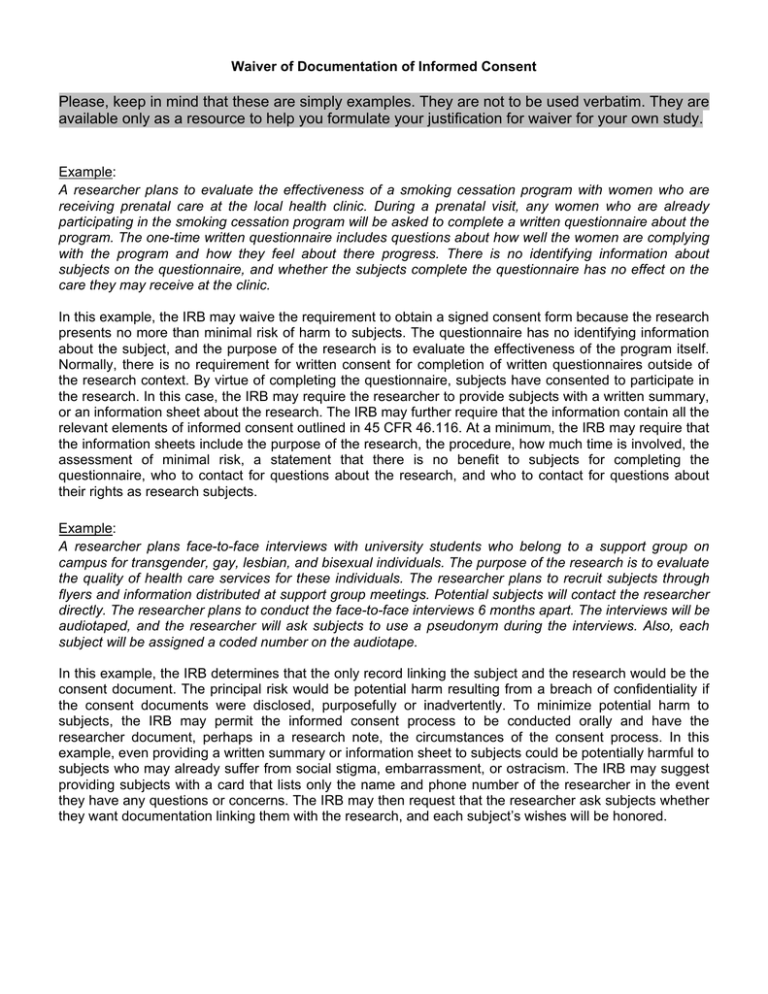
Waiver of Documentation of Informed Consent Please, keep in mind that these are simply examples. They are not to be used verbatim. They are available only as a resource to help you formulate your justification for waiver for your own study. Example: A researcher plans to evaluate the effectiveness of a smoking cessation program with women who are receiving prenatal care at the local health clinic. During a prenatal visit, any women who are already participating in the smoking cessation program will be asked to complete a written questionnaire about the program. The one-time written questionnaire includes questions about how well the women are complying with the program and how they feel about there progress. There is no identifying information about subjects on the questionnaire, and whether the subjects complete the questionnaire has no effect on the care they may receive at the clinic. In this example, the IRB may waive the requirement to obtain a signed consent form because the research presents no more than minimal risk of harm to subjects. The questionnaire has no identifying information about the subject, and the purpose of the research is to evaluate the effectiveness of the program itself. Normally, there is no requirement for written consent for completion of written questionnaires outside of the research context. By virtue of completing the questionnaire, subjects have consented to participate in the research. In this case, the IRB may require the researcher to provide subjects with a written summary, or an information sheet about the research. The IRB may further require that the information contain all the relevant elements of informed consent outlined in 45 CFR 46.116. At a minimum, the IRB may require that the information sheets include the purpose of the research, the procedure, how much time is involved, the assessment of minimal risk, a statement that there is no benefit to subjects for completing the questionnaire, who to contact for questions about the research, and who to contact for questions about their rights as research subjects. Example: A researcher plans face-to-face interviews with university students who belong to a support group on campus for transgender, gay, lesbian, and bisexual individuals. The purpose of the research is to evaluate the quality of health care services for these individuals. The researcher plans to recruit subjects through flyers and information distributed at support group meetings. Potential subjects will contact the researcher directly. The researcher plans to conduct the face-to-face interviews 6 months apart. The interviews will be audiotaped, and the researcher will ask subjects to use a pseudonym during the interviews. Also, each subject will be assigned a coded number on the audiotape. In this example, the IRB determines that the only record linking the subject and the research would be the consent document. The principal risk would be potential harm resulting from a breach of confidentiality if the consent documents were disclosed, purposefully or inadvertently. To minimize potential harm to subjects, the IRB may permit the informed consent process to be conducted orally and have the researcher document, perhaps in a research note, the circumstances of the consent process. In this example, even providing a written summary or information sheet to subjects could be potentially harmful to subjects who may already suffer from social stigma, embarrassment, or ostracism. The IRB may suggest providing subjects with a card that lists only the name and phone number of the researcher in the event they have any questions or concerns. The IRB may then request that the researcher ask subjects whether they want documentation linking them with the research, and each subject’s wishes will be honored.
